I've been searching both the forum and the WWW for details on the old, square version of the Ellsworth Jig. I also tried to locate a sample on my side of the pond for study. No luck.
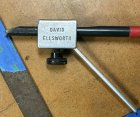
(Photo courtesy of hockenbery)
Would an owner of one be so kind as to provide a few measurements?
I'm NOT into copying or a DIY version - plenty of info on that on the net. I'd simply like to have a closer look at the details of the jig and how they differ from the present version, that I own and use. Honestly paid for, costums and all!
I'm fully aware of the similarities in function and grinding results as described well in other threads, this is all about curiousity and my own process of trying to understand at least some of the "whys" of jig sharpening.
The figures, I'm looking for are these. Since English is (obviously!) not my mother tongue, I've tried to illustrate each wanted measurement with a primitive drawing.
A) Length of the jig head
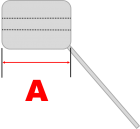
B) Distance from the bottom of the jig head to the "roof" inside the hole that supports the top of the gouge
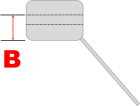
C) Max. height of the hole in the jig head
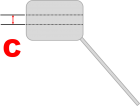
D) The length of the leg
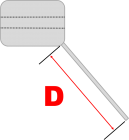
E) The leg angle in relation to the bottom of the jig
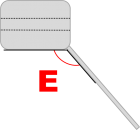
Thanks in advance for any help, you may be able to provide!
Lars
PS: Admin, if in any way inappropriate, please let me know!

(Photo courtesy of hockenbery)
Would an owner of one be so kind as to provide a few measurements?
I'm NOT into copying or a DIY version - plenty of info on that on the net. I'd simply like to have a closer look at the details of the jig and how they differ from the present version, that I own and use. Honestly paid for, costums and all!
I'm fully aware of the similarities in function and grinding results as described well in other threads, this is all about curiousity and my own process of trying to understand at least some of the "whys" of jig sharpening.
The figures, I'm looking for are these. Since English is (obviously!) not my mother tongue, I've tried to illustrate each wanted measurement with a primitive drawing.
A) Length of the jig head

B) Distance from the bottom of the jig head to the "roof" inside the hole that supports the top of the gouge

C) Max. height of the hole in the jig head

D) The length of the leg

E) The leg angle in relation to the bottom of the jig

Thanks in advance for any help, you may be able to provide!
Lars
PS: Admin, if in any way inappropriate, please let me know!


